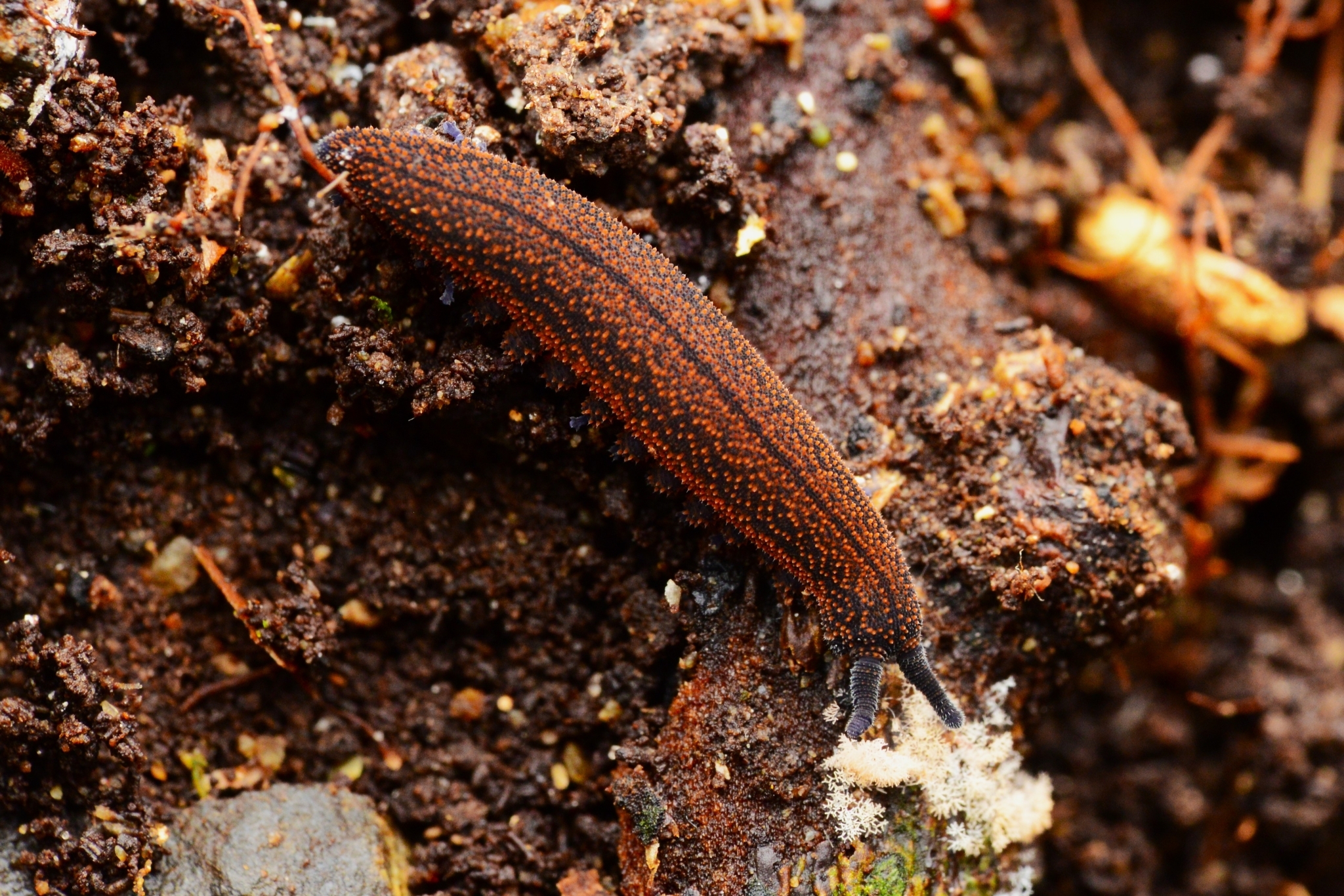New Zealand is well known for its Bird of the Year competition, which has seen winners ranging from a delightfully round, drunk pigeon to a rogue bat. But did you know it awards a “Bug of the Year” too? And this year’s champion is an ancient and surprisingly savage killer.
ADVERTISEMENT GO AD FREE
The winner in question is the New Zealand velvet worm (Peripatoides novaezealandiae), which beat out the praying mantis and giant springtail to take the crown, voted for by the public and officially bestowed by the Entomological Society of New Zealand.
As much as we love a bug that engages in sexual cannibalism, or a springtail that’s grown so big it can’t even jump anymore, we’d argue there’s no worthier victor than the velvet worm.
One reason for that is its appearance. P. novaezealandiae looks a bit like someone couldn’t decide between making a slug, a worm, or a caterpillar and just said “screw it” and smooshed them all together into a bug with adorably stumpy legs and a velvety, orange-speckled body.

This is the skin of a killer, Bella.
It makes sense that they seem a bit confused; velvet worms are thought to be a “missing link” between annelid worms and arthropods, sharing physical traits with both. They’re also thought to have remained pretty much unchanged for the 500 million years they’ve been around, which has led scientists to give them another nickname: “living fossils”.
So far, P. novaezealandiae seems like a nice, fuzzy little grandpa – but appearances can be deceiving. It’s a good time to be grateful you’re not a termite, beetle, or one of the other small invertebrates that a velvet worm preys upon as it moves along the forest floor, because you otherwise might’ve ended up as soup.
When it comes across a potential snack, the velvet worm shoots a sticky slime out of small projections near its mouth, trapping its prey. It then uses its jaws to start cutting the prey up, while injecting it with saliva to begin the process of digestion. Once its victim’s insides are suitably liquified, the velvet worm sucks all those delicious juices up.
ADVERTISEMENT GO AD FREE
It’s also a surprise that we even know any of this; the New Zealand velvet worm is notoriously reclusive and little studied, to the point where its conservation status is difficult to accurately determine.
However, it’s thought that velvet worms in general are under threat from habitat loss, introduced predators like birds, rats, and hedgehogs, and collectors who either directly remove them or disturb their habitat.
It’s hoped that through competitions like Bug of the Year, greater awareness will be brought to velvet worms and other bugs in New Zealand, spurring us on to learn even more about them – even if they do turn out to be old-timey, beetle soup-making killers.
Source Link: New Zealand’s Bug Of The Year Is A “Living Fossil” That Turns Prey To Soup